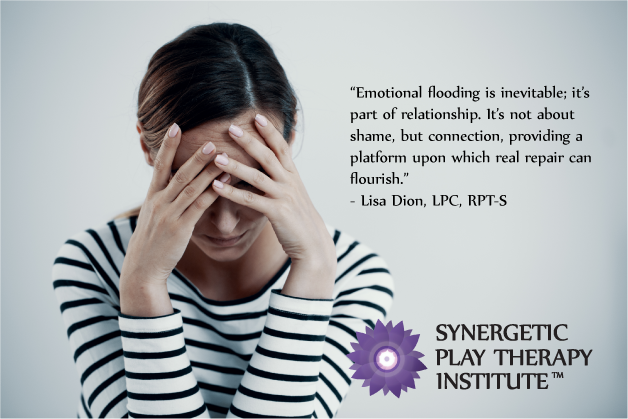Emotional Flooding in the Playroom: When the Therapist Finds Themselves Outside their Window of Tolerance
Emotional flooding is part of therapy: it occurs in all play therapy paradigms. Looking at it not through a lens of shame but with a focus on connection turns it from an enemy into an ally. In fact, emotional flooding – because of its realness and rawness – can lead to greater levels of healing and authenticity.
1:35 Lisa introduces LFPR series
1:57 Guilt and shame in emotional flooding
2:24 Normalizing emotional flooding
3:04 There is no play therapy model that is immune to emotional flooding
3:27 Why does emotional flooding happen?
3:50 Why is emotional flooding necessary, from a neuroscience perspective?
4:50 How does the dance of attunement allow for us to be human?
5:59 Emotional flooding and the window of tolerance
6:33 We are more prone to emotional flooding during certain times
7:07 Why might a child emotionally flood?
8:59 Signs of emotional flooding
10:56 Emotional flooding can cause a hyper-arousal or hypo-arousal response
12:03 The reasons a child is coming to therapy are often because of emotional flooding
12:50 Taking shame out of emotional flooding is repairing in itself
13:37 Creating connection
14:30 The repair from emotional flooding can move the relationship forward and create growth
15:39 Aggression in Play Therapy: A Neurobiological Approach for Integrating Intensity
16:32 What can you do when you feel emotionally flooded?
17:09 One foot in and one foot out
18:33 Using your breath to ground yourself
19:33 Why is it important not to sit still?
20:56 Naming the emotional flooding
22:00 Returning to the window of tolerance






